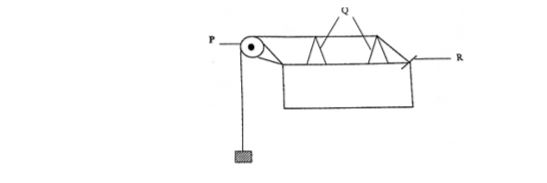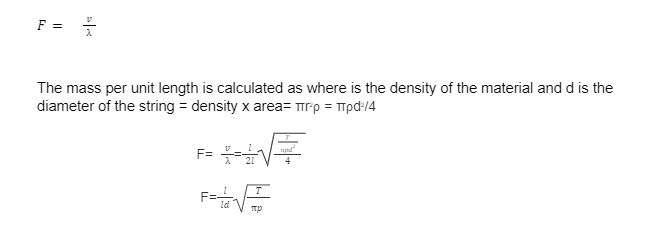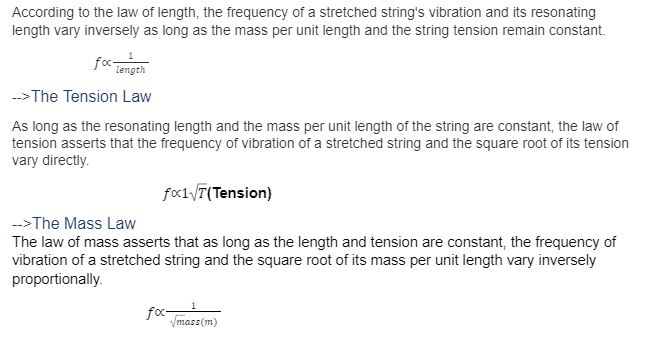Introduction
The device was used to demonstrate the relationship between the frequency of the sound produced by a plucked string and the tension, length, and mass per unit length of the string. The transverse standing wave of the string produces the sound. The sonometer is made up of a one-meter-long hollow box. A sonometer is a device that shows the relationship between the frequency of a plucked string’s sound and the string’s tension, length, and mass per unit length.
What exactly is a sonometer?
The term “sonometer” refers to a device that detects sound waves.
The gadget is used to demonstrate the relationship between the frequency of the sound generated by the string when plucked and the string’s tension, length, and mass per unit length. The sound is created by the string’s transverse standing wave.

Any device that uses a thin metallic wire stretched over two bridges that are commonly mounted on a soundboard to measure the vibration frequency, tension, density, or diameter of the wire, or to check relationships between these parameters. Monochord is another name for it.
An apparatus that uses a piano wire strung between two bolts in the rock to measure rock stress; any change in pitch after destressing is observed and utilized to detect stress.
Working of the sonometer
For a long time, these have been utilized as demonstration experiments. Pythagoras, in reality, devised the monochord in the 7th century B.C. In the mid-nineteenth century, the monochord was modified by Albert Marloye, a French instrument manufacturer, and became known as a differential sonometer. Demonstrations are available for both the monochord and the sonometer. There are a variety of experiments that can be carried out.
- Demonstrate that the frequency of a vibrating string varies inversely with its length: Each string’s length can be adjusted by moving a bridge beneath it. The 2nd, 3rd, 4th, 5th, and so on harmonics will be heard if the string is plucked towards one end and halted at 1/2, 1/3, 1/4, 1/5, and so on. It is possible to make 10 or more harmonics audible by stopping the string with a sharp-edged piece of soft rubber (an eraser).
2) Intervals: If you cut the string in half, the pitch rises by a perfect fifth, or a fraction 3/2 over its initial frequency. The pitch raises a perfect fourth, or a fraction 4/3, if the length is increased by 3/4.
3) The frequency is proportional to the square root of the tension: The string goes through a pulley, and the tension is produced by a weight suspended from the end of the string… quadruple the weight to secure twice the frequency.
4) Finally, the frequency is inversely proportional to the square root of the string’s mass per unit length. To demonstrate this, we provide a modest range of wire sizes.
The Sonometer’s Construction
The sonometer is made up of a one-meter-long hollow box.
A consistent metallic rope is fastened to the inside of this hollow box.
With the help of a pulley, the first end of the string is connected to the hook, while the second end is connected to the weight hanger.
The monochord is named for the fact that there is just one string utilized.
Weights are placed to the free end of the string to enhance the tension.
Two adjustable knives are placed and their positions are modified correspondingly to modify the vibrating length of the stretched string.
The Sonometer in Action
After the set-up is complete (as illustrated in the sonometer diagram), a transverse standing wave is generated at the knife edges with the nodes. There is a creation of anti-nodes in addition to the nodes.
The following is a mathematical description of how the sonometer works:
Let l be the vibrating element’s length.
l = λ/2
λ = 2l
Let f be the vibrating element’s frequency. T is the string tension, and M is the mass per unit length. Then,

Transverse Vibrations Laws
On a stretched string, the laws of transverse vibrations can be classified into two categories:
The Length Law
Tension’s law
The mass-energy law
–>The Length Law
According to the law of length, the frequency of a stretched string’s vibration and its resonating length vary inversely as long as the mass per unit length and the string tension remain constant.

What exactly is the function of a sonometer?
The sonometer is used to demonstrate the relationship between frequency and the tension, length, and mass per unit length of the string, as we already know. As a result, a sonometer can be used to determine the following:
The tuning fork’s frequency.
The alternating current’s frequency
The string’s tension is
The mass of the object dangling from the ceiling is unknown.
What does a standing wave look like?
Stringed musical instruments are one example of a standing wave.
conclusion
The term “sonometer” refers to a device that detects sound waves. The sonometer is made up of a one-meter-long hollow box. A consistent metallic rope is fastened to the inside of this hollow box. The device was used to demonstrate the relationship between the frequency of the sound produced by a plucked string and the tension, length, and mass per unit length of the string. The transverse standing wave of the string produces the sound.
 Profile
Profile Settings
Settings Refer your friends
Refer your friends Sign out
Sign out






